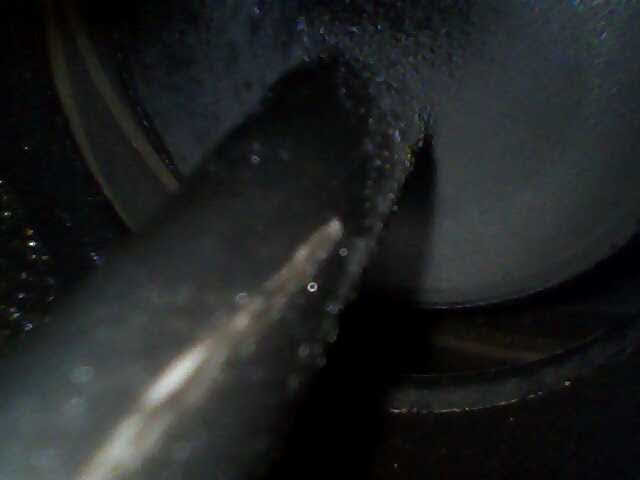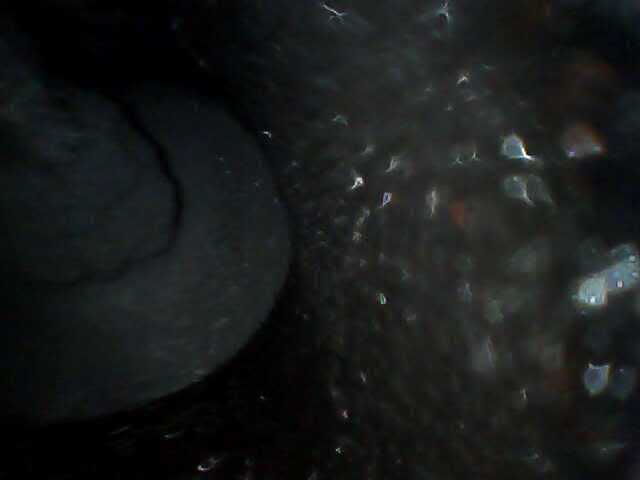I'm not too familiar with walnut blasting and what it involves, nor am I familiar with what "TB and Linkage" is. I assume when you say walnut media, you mean any walnut bits left behind after servicing your vehicle with a walnut blaster? I don't exactly have the best knowledge or money for the tools to do this myself, I don't think, so I'd probably get my vehicle serviced by a shop. What risks are there from doing a walnut blast job? I drive about 30-45 minutes each trip to and from work in my VN, so I guess my buildup won't be as much? Also, is it recommended to get a catch can for this car based on the carbon buildup potential? Pardon my many questions, but I'm very curious to know and I haven't exactly had the time to go searching this up myself

I've been doing so many things lately.
I had all this written up yesterday and never posted this ^ lol.
About walnut media valve cleaning..
This is the approved cleaning method of several OEMs, including BMW and Mercedes. No blast media enters the engine past the valves, none of it remains in there when the procedure is finished, and the walnut media that's used is non abrasive organic material that cannot cause engine damage even if any stray particles are somehow missed. I've tried other methods over the past 12 or so years since I started working on DI engines and the walnut blast method is by far my favorite method to get the best results. I've done dozens and dozens of walnut valve cleaning procedures.
The procedure goes like this:
After removing the intake manifold each cylinder is done individually because each one has to be cleaned at TDC on the compression stroke so that the valves are closed. All other intake ports are plugged (I use foam plugs like big earplugs). No media goes past the valve (and there is no way for it to reach the oil system or especially a bearing surface even if it did). The blast machine has a nozzle that blasts clean walnut shell media into the port at the valve and removes the carbon entirely down to clean metal (but does not remove any metal). The machine has a vacuum attachment that collects the media as it bounces back out of the port along with the removed carbon and collects it in a shop vac for disposal. Any residual dust left in the intake port is blown out with compressed air before reinstalling the intake manifold. The media leaves the port and valve stem and neck clean and dry like brand new.
When you do this as a maintenance procedure you only remove the intake manifold. There's no need to remove anything else. It's a completely safe procedure and is actually safer when dealing with heavy carbon than chemical cleaners are because the carbon is removed and not allowed to break free and run through the engine. With chemical cleaners the carbon has to exit the engine by going through it and through the turbocharger and catalyst. If any large pieces break free at once it has potential to cause damage to the turbine wheel of the turbocharger (this was a concern Ford listed when they prohibited chemical carbon removal on their DI engines).
Modern cars don't have "linkage" for the throttle body to worry about removing. The throttle body is a fully enclosed electronic unit with one electrical plug and no cables or linkages. All of the moving parts are sealed inside of it and in most cases you don't even need to remove the throttle body from the manifold to remove the manifold from the engine. On our engine the manifold removal is very simple and is about a 30 minute procedure. Total time for a media blast cleaning on this car I figure will be about 2 hours.
The only type of carbon buildup that could require head removal is carbon that's built up in the combustion chamber or on the valve seats but that's not the sort of carbon deposits I'm really talking about here. Those type of deposits (on a healthy motor without other problems) can be avoided by doing intake valve cleanings on time, keeping the valve clearances in adjustment, using top tier fuel, the old "Italian Tune Up" and maybe the occasional bottle of a good fuel injector cleaner (one that's DI safe). It's not common for them to get so bad they need the head off to clean it.
What needs to be removed to get the borescope in there?
The spot I put the borescope through was the port for the sensor (it was either an IAT or MAP, I don't recall) that's right in the middle of the manifold pointing straight forward. Just one screw to take the sensor out but it takes some persistence to get the probe to go up, around, and down into the port to the valve without snagging. I was using an Autel MV108 camera which has a nice small probe tip with nothing to snag on the way back out.
What about adding a meth injection kit. That would help keep the valves clean also. Plus lower IAT's. And higher octane with the 93 I'm using now. I've been going back and forth on this idea. But to utilize meth to it's potential you need a tune. A tune voids warranty. So dilemma.. ha
I had good luck with meth injection on one of my other cars, but it wasn't a DI engine. It was worth it though from a performance standpoint. It let me run enough boost for another 47whp past where I was pinging on pump gas and the engine did that for 200,000 miles and never blew up.
As far as WMI on this car... I would love to do a hardcore multiport WMI setup with a progressive controller and then have the car dyno tuned with a reflashed cloned ECU. I can see that being able to get 400whp out of one of these cars with supporting mods. It would void the warranty for sure though and I'd rather put that sort of money into my other car (to be fully honest) since the VN is supposed to be my "keep it simple" daily driver.
I've heard the same as what Red says though, it won't remove carbon buildup from the intake valves. It sprays only under boost and that's just such a small amount of time overall on a street driven car. Also, methanol is not a great solvent for oil as methanol is a polar molecule and motor oil is non-polar. So meth doesn't wash the oil and carbon off the valve nearly as well as gasoline (which is non-polar like oil) will.
However.. I recall that some people run isopropyl alcohol either with or instead of meth in their WMI systems (a lot of talk about it on the Devils Own forum anyway). Isopropyl is a primarily non-polar molecule that's also slightly polar and readily dissolves oil but also dissolves into water. I wonder if isopropyl wouldn't clean the valves a lot better than meth does. I'd love to test this out and see if it works. I almost want to buy a cheap GDI car just to experiment with. The only concern I can think of is that iso might dissolve into the oil on the cylinder wall more readily and increase oil dilution or cause other unintended side effects that meth doesn't.
I disagree with Red on WMI causing problems with rubber fuel system components. Yes methanol will swell butyl rubber. I didn't have any issues with it eating or swelling the rubber parts on my eclipse though, and I think it's because it's not really soaking them constantly because injection is relatively infrequent and the methanol is diluted. They're not constantly in contact with it in high concentrations like in a fuel supply system.
This car likely doesn't use butyl rubber o-rings or seals anywhere in the intake though anyway. The o-ring I saw on the sensor I pulled looked to be either nitrile or fluorosilicone/silicone either of which aren't effected by alcohols. I know the intake gasket and throttle body gasket are fluorosilicone for certain.
I'm just waiting on that Forge catch can to come out because that's what I plan to do, along with top tier gas and GF-6 oil as soon as it hits the market.
![Image]()
![Image]()













